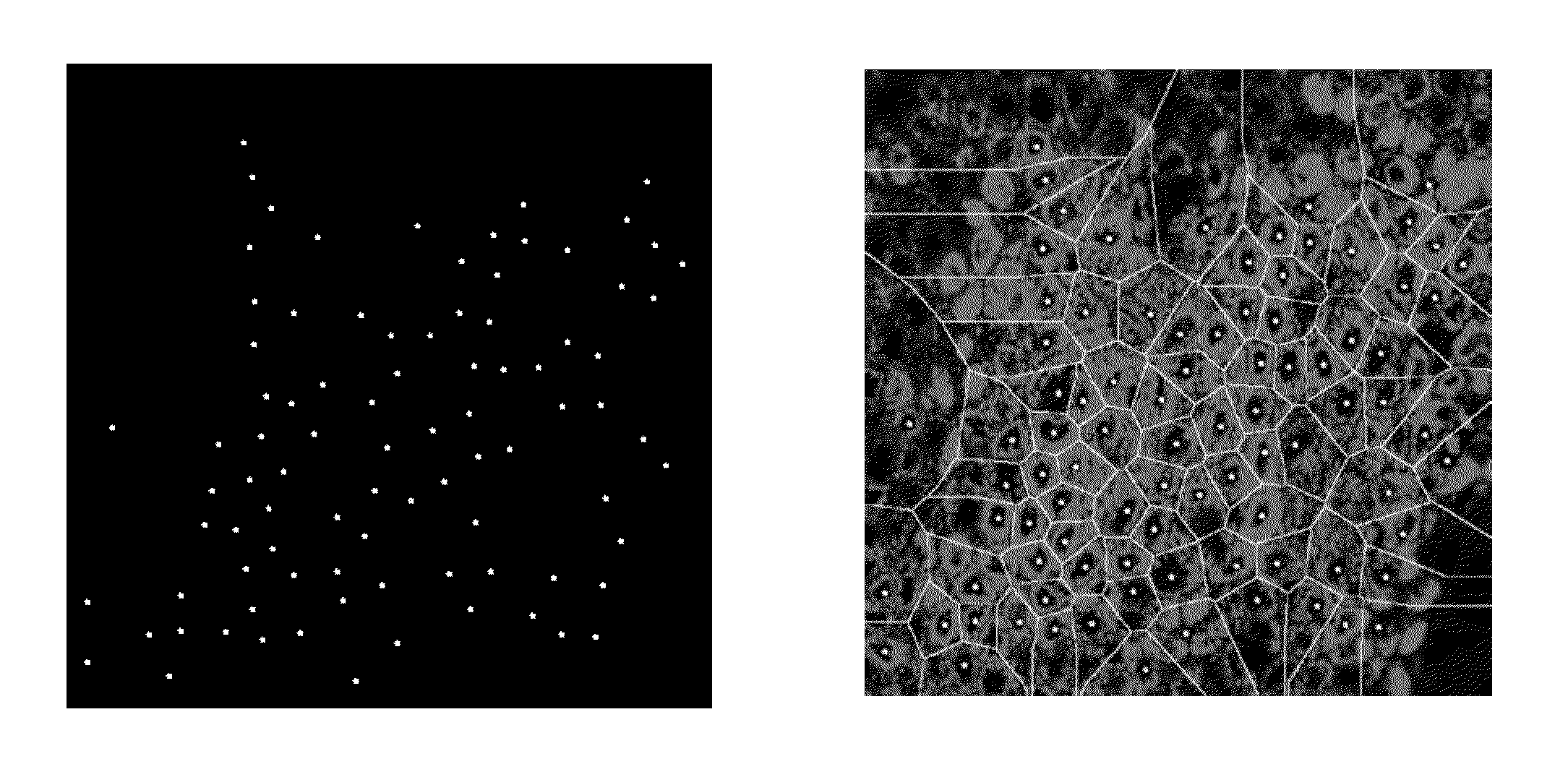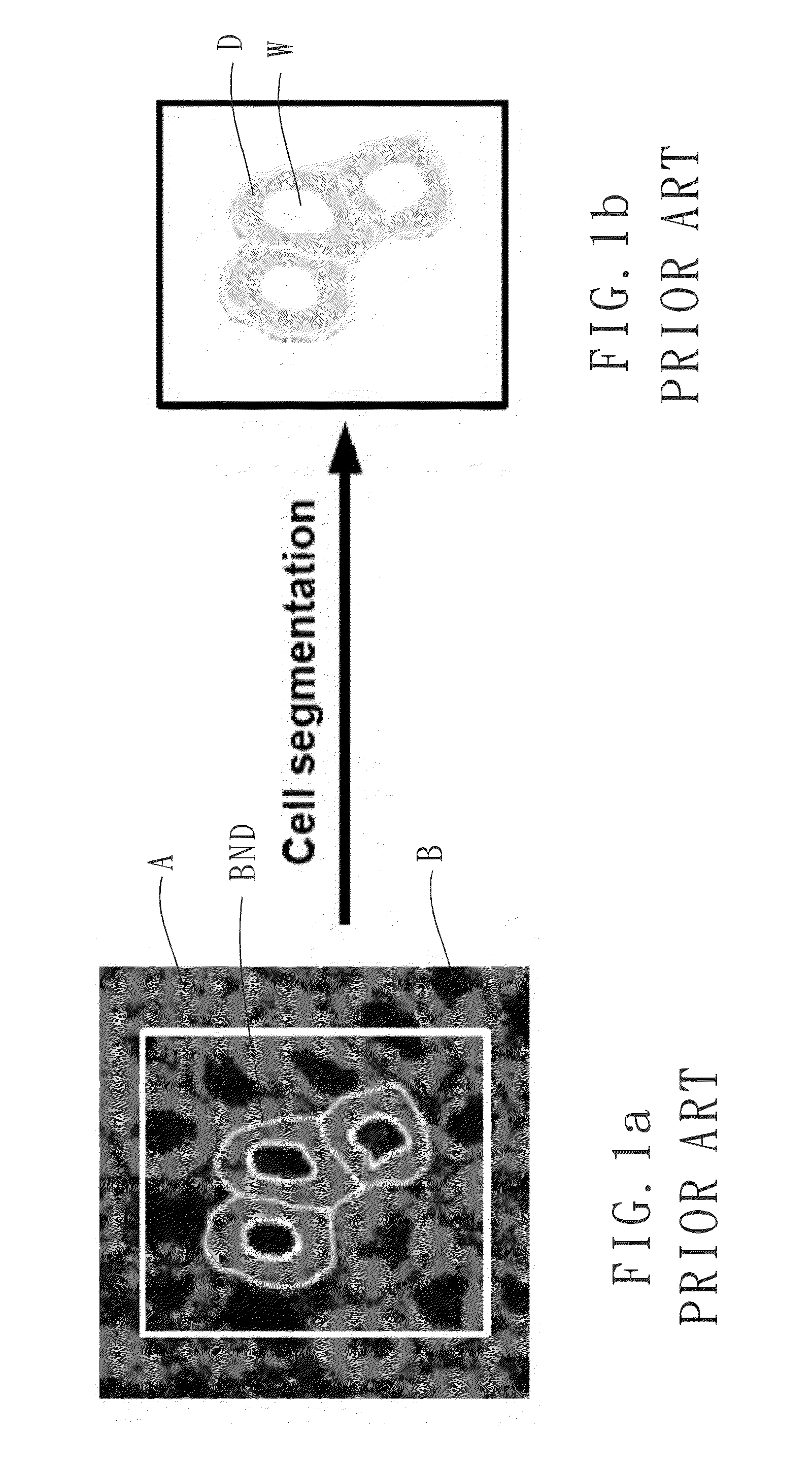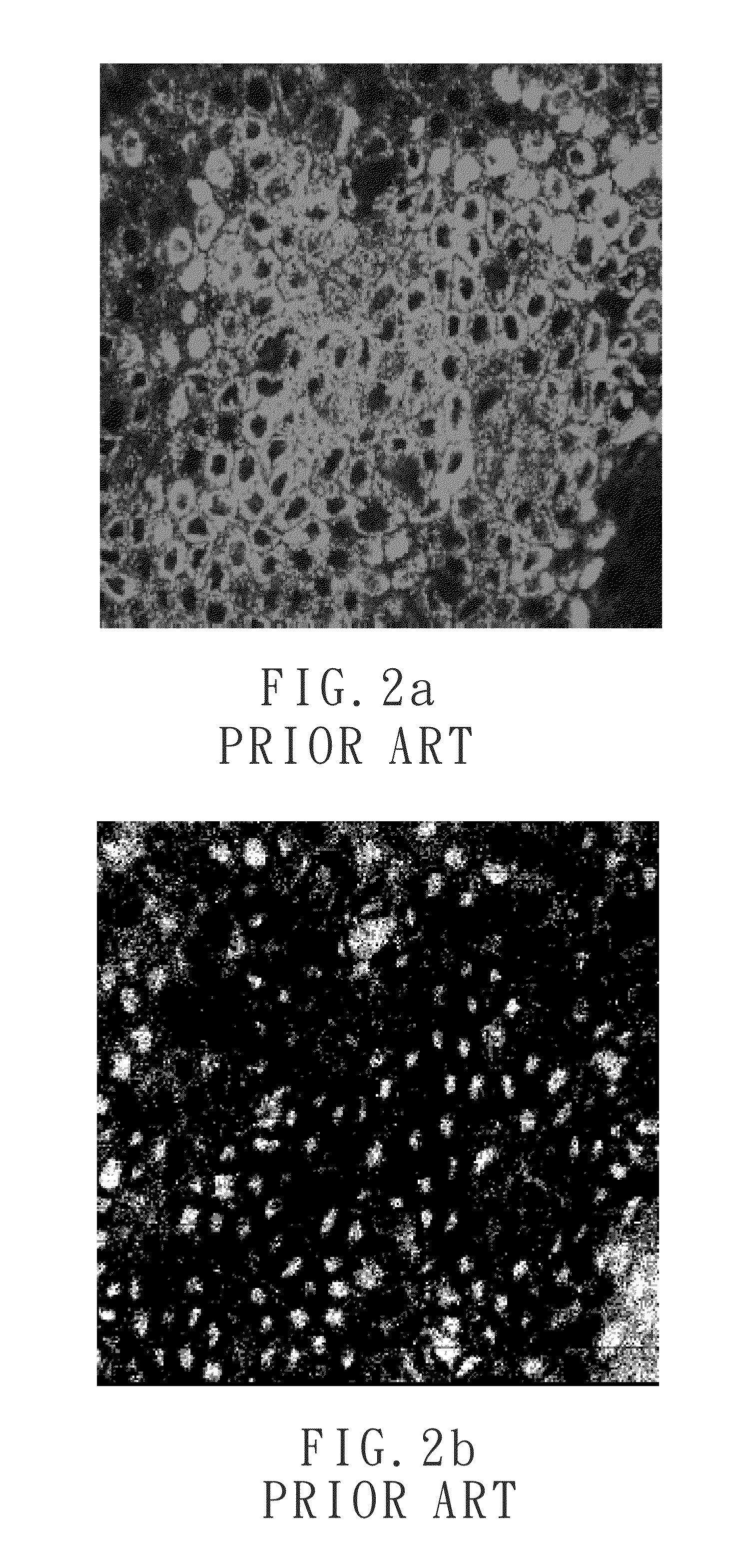Cell image segmentation method and a nuclear-to-cytoplasmic ratio evaluation method using the same
a cell image and nuclear-to-cytoplasmic ratio technology, applied in image enhancement, image analysis, instruments, etc., can solve the problems of cancer cell infection or even spreading, optical in vivo virtual biopsy can conquer the tedious stages of conventional invasive biopsy procedure, save time and cost for conventional pathology examination, and achieve high efficiency
- Summary
- Abstract
- Description
- Claims
- Application Information
AI Technical Summary
Benefits of technology
Problems solved by technology
Method used
Image
Examples
Embodiment Construction
Cell Segmentation and NC Ratio Analysis
[0120]In this disclosure, we focus on the processing and analysis procedure applied to images and image sequences with application to biomedical imaging. When observing images or image sequences, there are four basic descriptors, including shape, size, color and texture, perceived by human eyes. For making it possible to understand and analyze these basic descriptors by computers or machines, some mathematical models and their corresponding physical meanings will be understood and utilized to transform observable descriptors into informative features. For the application of Nuclear-to-Cytoplasmic ratio (NC ratio) analysis in biomedical imaging, biopsy technique is required to acquire the cells or tissues to be analyzed and cell segmentation which can isolate and select individual nucleus and its cytoplasm is then performed for NC ratio analysis. Subsequently, the evaluated NC ratios or cell information are discussed and interpreted with medical...
PUM
 Login to View More
Login to View More Abstract
Description
Claims
Application Information
 Login to View More
Login to View More - R&D
- Intellectual Property
- Life Sciences
- Materials
- Tech Scout
- Unparalleled Data Quality
- Higher Quality Content
- 60% Fewer Hallucinations
Browse by: Latest US Patents, China's latest patents, Technical Efficacy Thesaurus, Application Domain, Technology Topic, Popular Technical Reports.
© 2025 PatSnap. All rights reserved.Legal|Privacy policy|Modern Slavery Act Transparency Statement|Sitemap|About US| Contact US: help@patsnap.com



